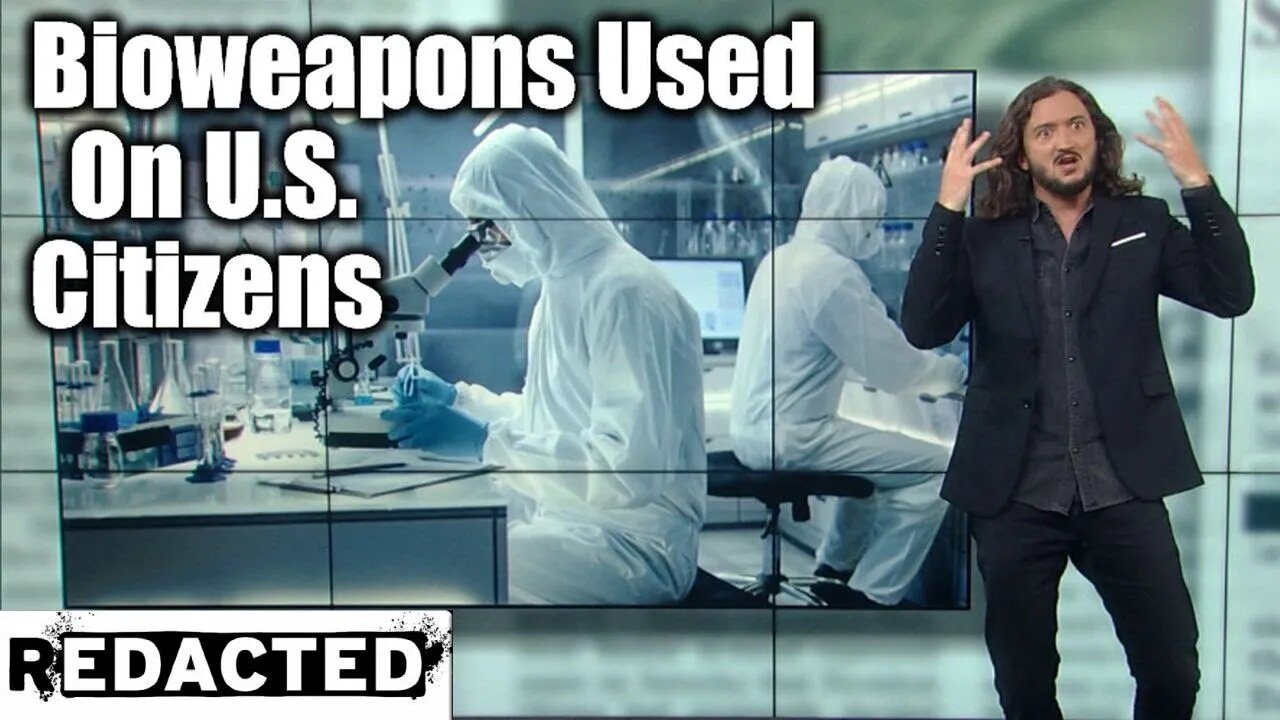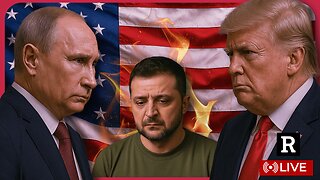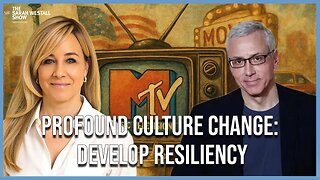Premium Only Content

The United States Government has a Long History of Biological Warfare Against it's Own Citizens
The United States Government has a Long History of Biological Warfare Against it's Own Citizens
June 25, 2021
Redacted Tonight
Over and over again, the military has conducted dangerous biowarfare experiments on Americans
US government offers free healthcare to southern rural African Americans, intentionally injects them with syphilis, to study the effects, in Tuskegee, Alabama between 1932 and 1972. The U. S. Public Health Service ran this study on more than 300 people without notifying the participants about their disease nor treating them even after the introduction of penicillin. The study included recording the progress of disease and performing an autopsy on the deaths.
On September 20, 1950, a US Navy ship just off the coast of San Francisco used a giant hose to spray a cloud of microbes into the air and into the city's famous fog. The military was testing how a biological weapon attack would affect the 800,000 residents of the city.
The people of San Francisco had no idea.
It was one of the first large-scale biological weapon trials that would be conducted under a "germ warfare testing program" that went on for 20 years, from 1949 to 1969. The goal "was to deter [the use of biological weapons] against the United States and its allies and to retaliate if deterrence failed," the government explained later. "Fundamental to the development of a deterrent strategy was the need for a thorough study and analysis of our vulnerability to overt and covert attack."
Of the 239 known tests in that program, San Francisco was notable for two reasons, according to Dr. Leonard Cole, who documented the episode in his book "Clouds of Secrecy: The Army's Germ Warfare Tests Over Populated Areas."
In 1951, tests were also carried out at the Norfolk Naval Supply Center in Virginia – a massive base that equips the US Navy. Fungal spores were dispersed to see how they would infect workers unpacking crates there. Most of the workers were African American and the scientists wanted to test a theory that they were more susceptible to fungal disease than European Americans.
As well as open air testing, the US military also has a record of weaponising infected insects. In 1954, for example, scientists carried out Operation Big Itch. The test was designed to find out if fleas could be loaded into bombs (they could). The tests happened just a few years after the Soviets accused the US of dropping canisters full of insects infected with chorea and the plague in Korea and China during the Korean War.
Other experiments involved testing mind-altering drugs on unsuspecting citizens. In one shocking, well-known incident, government researchers studied the effects of syphilis on African Americans without informing the men that they had the disease — they were told they had "bad blood." Researchers withheld treatment after it became available so they could continue studying the illness, despite the devastating and life-threatening implications of doing so for the men and their families.
In 1997, the National Research Council revealed that the US also used chemicals to test the potential of biological weapons in the 1950s. Zinc cadmium sulphide was dispersed by plane and sprayed over a number of cities, including St Louis in Missouri and Minneapolis in Minnesota. These cites were chosen because they were similar to Soviet targets such as Moscow in terms of terrain, weather and population. The council concluded that no one was hurt and that the level of chemical used was not harmful, but in 2012, sociology professor Lisa Martino-Taylor claimed that there was a spike in cancer rates that could be connected back to the chemicals, which she alleges were radioactive.
In 2001, a New York Times report revealed projects testing biological weapons that began under the Clinton administration and continued under the second Bush administration. A 1972 treaty theoretically prohibited developing biological weapons, but this program justified it with the argument that new weapons needed to be studied in order to develop adequate defenses.
After the 2001 anthrax attacks, funding for bioterrorism research spiked by $1.5 billion. Then in 2004, Congress approved another $5.6 billion bioterror research project.
There was a massive increase in testing in 1962 when then US Secretary of Defence, Robert McNamara, authorised Project 112. The project expanded bioweapons testing and pumped new funds into research.
One of the more controversial tests took place in 1966 on the New York subway. Scientists filled light bulbs with Bacillus globigii bacteria and then smashed them open on the tracks. The bacteria travelled for miles around the subway system, being breathed in by thousands of civilians and covering their clothes.
In 2008, the US Government Accountability Office acknowledged that tens of thousands of civilians might have been exposed to biological agents thanks to Project 112 and other tests.
The same report noted that, since 2003, the US defence department has been trying to identify which civilians had been exposed during Project 112 to let them know. The military denies this exposure involved any harmful disease, but many of those who have been identified allege they now suffer from long-term medical conditions.
-
 1:16:24
1:16:24
Kim Iversen
4 hours agoAIPAC NATION: Israel First, Who Really Runs Washington?
71.6K136 -
 LIVE
LIVE
Nerdrotic
2 hours ago $0.70 earnedInvestigations Into Earth's Moon | Forbidden Frontier #110
471 watching -
 LIVE
LIVE
Quite Frankly
7 hours ago"The Unconscious Mind & Hypnosis" ft. Giulio Anselmo 8/7/25
465 watching -
 1:06:01
1:06:01
vivafrei
3 hours agoTrumps Crackdown on the Census! Corruption in Canada, Eh! Tulsi's Interview! Carville's Apology!
32.2K17 -
 15:32
15:32
AndresRestart
7 hours ago $0.11 earnedTHESE Mario 40th Anniversary Rumors Make Way More Sense Than That Collection "Leak"
6.39K1 -
 2:11:45
2:11:45
Redacted News
4 hours agoThis is HUGE news, and neo-cons are already trying to DESTROY it | Redacted News Live
113K81 -
 30:53
30:53
Kimberly Guilfoyle
6 hours agoThe Trump Doctrine Delivers, Interview with Daily Signal Producer Virginia Allen | Ep244
28.7K14 -
 1:03:56
1:03:56
Sarah Westall
3 hours agoBy Design or Organic? Profound Culture Change Oncoming and Accelerating w/ Dr. Drew
29.3K3 -
 30:00
30:00
BEK TV
21 hours agoCounter Culture Mom
3.93K -
![🔴LIVE - DR DISRESPECT - [DROPS ON] BATTLEFIELD 6 BETA LAUNCH DAY!](https://1a-1791.com/video/fww1/de/s8/1/E/W/g/9/EWg9y.0kob-small-LIVE-DR-DISRESPECT-DROPS-ON.jpg) 9:03:49
9:03:49
Dr Disrespect
10 hours ago🔴LIVE - DR DISRESPECT - [DROPS ON] BATTLEFIELD 6 BETA LAUNCH DAY!
132K15